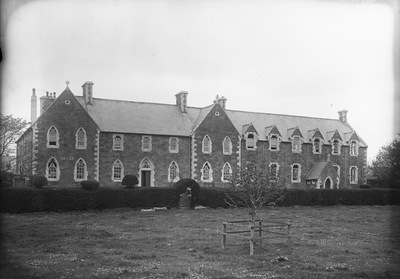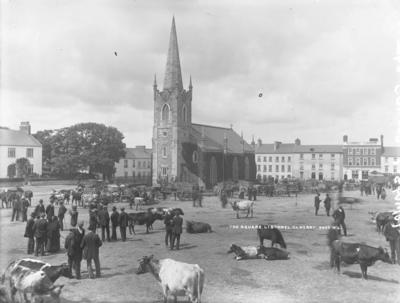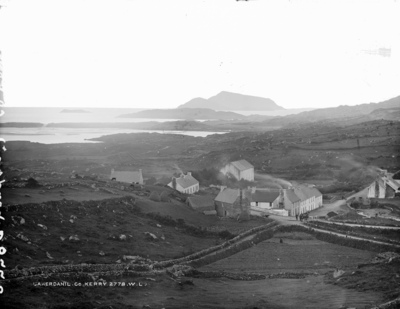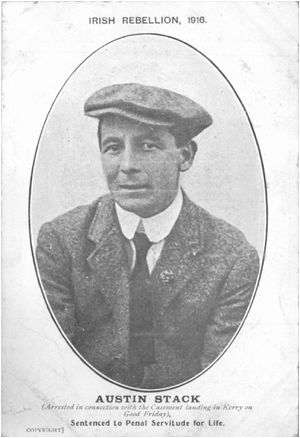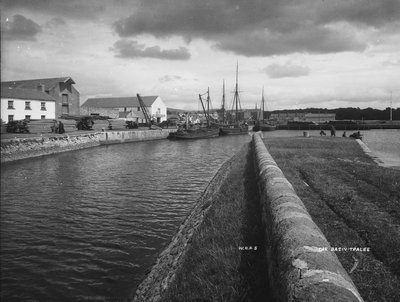Politics and institutions in Kerry in the early 20th century
View the photo galleryKerry was predominantly a Catholic county. More than 155,000 people in the county were Catholic: this equated to more than 95% of the population. There were small Church of Ireland (Frederick Barton, a handyman in Fenit), Methodist (George Forde, a clergyman in Killarney) Presbyterian (Neil Brownlee, a Presbyterian customs officer in Fenit), Plymouth Brethren (John Brennan in Kenmare) and Jewish communities, but the institutions of the Catholic church were visible in every corner of Kerry (see Convent of Mercy in Tralee). So too were its mores (see interesting return for Katie Joy from Listowel). The Bishop of Kerrry was domiciled at St. Brendan’s Cathedral in Killarney, from where he oversaw a network of parishes (Fr Timothy Griffen was the parish priest in Ballyferriter). There were also various religious orders based in the county. The Dominicans had a house in Tralee and the Franciscans established a house in Killarney.

NLI TIL 616 001: The Gallarus Oratory, Dingle peninsula, one of the earliest Christian buildings in Ireland, dating from 6th - 7th century.
The Catholic Church (convent at Bahaghs) in Kerry had encouraged the development of the national school system, and there were more than 200 national schools in Kerry by 1911 (see teacher Johanna Hickson, Kinard, West Kerry). These schools were theoretically nondenominational, though there was also a relatively small number of schools run directly by the churches. There were far fewer secondary schools than primary ( see teachers John and Ellen Hickson, Kinard, West Kerry). As part of the Cathedral complex, St. Brendan’s Seminary was opened in 1860. There were other boarding schools in Listowel, while the Dominicans ran a secondary school in Tralee. There was also a secondary school for girls at Scartlea Convent near Killarney, and a Loreto Convent at Killarney. Despite the network of schools, almost 12% of the population of the county could neither read nor write.
Music teachers were found across the county (Clancy sisters in Listowel). Other schools included the School of Woodcraft which opened in Killarney in 1895 and was later subsumed into a technical school in the town in the late 1920s. Killarney was also home to the School of Housewifery, which was established for the purpose of training girls in the art of cooking, laundry work, housewifery and needlework. Alongside schools, other institutions included church halls ( church hall in Listowel).The writ of the British administration in Dublin Castle was a considerable distance from Kerry, and local politicians enjoyed a greater sense of power than was the case in counties closer to the capital. There were the usual court services ( James Woulfe Flanagan, RM, in Listowel and Tommy MacGillycuddy, court clerk in Killorglin). Local government in Kerry had been re-ordered in line with the rest of country in the last decades of the nineteenth century. The old nominated grand jury of local landowners was replaced by elected county councillors, usually members of the Catholic middle classes (though local landlords continued to be elected in Kerry, including Lord Castlerosse). Tralee, Killarney and Listowel (Listowel workhouse) all had local councils, while six rural district councils were also established. Boards of Guardians were also elected to administer to the health and welfare needs of the poor in six Poor Law unions across Kerry.
In local politics, women were making advances towards equality with men in terms of suffrage and representation. In 1896 an act was passed which allowed that women could be elected as poor law guardians. Local women Anne Rowan, Frances Donovan and Teresa Leonard established a Women’s Poor Law Guardian committee and resolved to contest the forthcoming elections. This committee later evolved into the Kerry Ladies’ Poor Law Association, drawing in members such as Lady Monteagle and Mary Harrington. In elections in 1897 three Kerry women were elected as guardians out of a total of twelve across the entire country. They were Frances Donovan, Anne Rowan of Prince’s Quay, Tralee, and Theresa Leonard.
Rowan was a friend of Anna Haslam of the Women’s Suffrage Association in Dublin. She was a staunch unionist and the daughter of an archdeacon, and was famed in Tralee for her work on behalf of the poor of the town and district. She was nearly 80 when she died in 1913 while attending a unionist demonstration in Dublin. Frances Donovan was from a merchant family in the town and was known as an accomplished yachtswoman, horsewoman and pianist who was very interested in the furtherance of female education. Her brother St. John Henry Donovan became chairman of Kerry County Council. Theresa Leonard was a Belfast Catholic who married into a local legal family before being widowed at a young age. A fourth woman to be elected to the board of guardians in Kerry was Lady Castlerosse, who topped the poll in the Killarney district in 1898. She had been born Elizabeth Baring, a member of the famous British banking family, who had converted to Catholicism.
Austin Stack (living at Rock St. in 1911, returned wrongly by his landlady as Anthony Stack) was already the leading republican in Kerry. He had been born in Tralee and had been a member of the IRB since 1908. Also a member of the GAA, he was soon to emerge as the commander of the Kerry brigade of the Irish Volunteers following their formation in 1911. In 1916 Stack was arrested in connection with the attempt by Roger Casement to land German arms at Banna Strand in the days before the Easter Rising. He served as a member of the first Dáil, was a minister between 1919 and 1922 in the government which that Dáil elected, and fought for the anti-Treaty side in the civil war.
Although there was an army presence in Kerry (including those who came on holidays: Leonard Higgs visiting Fenit), the men who policed the county – and sought to keep tabs on the activities of Stack and his fellow activists – were members of the Royal Irish Constabulary (William Batchelor, ex-RICman from Kilkenny now living at Milltown) who had barracks in every town in the county. The barracks in Tralee ( see Patrick Butler, Canal New Road, Tralee) had been rebuilt in the 1880s on an elevated site not far from the Railway Station. The officers’ quarters were built with niches through which a gun could be fired through in the event of an attack.
Among the men whom the police were watching at the time was the socialist activist, James Connolly. Connolly had come to Kerry amid claims of minor famine in the county in 1898. For example, an inquest into the death of a Kerry fisherman Joseph Griffen had noted that his demise had been accelerated by hunger. By 1911 trade unions were operating in Kerry. A leading figure in Tralee was M. J. O’Connor, secretary of the Tralee Trades and Labour Council, local organiser for the National Workers’ Union, and also possibly a member of the Irish Republican Brotherhood. The Labour movement in Tralee was given more to negotiation and compromise than to class struggle and revolution. Nonetheless, there were periodic disputes and one involving the harbour led the Harbour Board chairman, M. J. Kelliher, to claim that trade unionists were on the verge of ruining the local economy. The rhetoric of the age of class struggle was evident in Kerry, just as it was in cities all across Europe.

